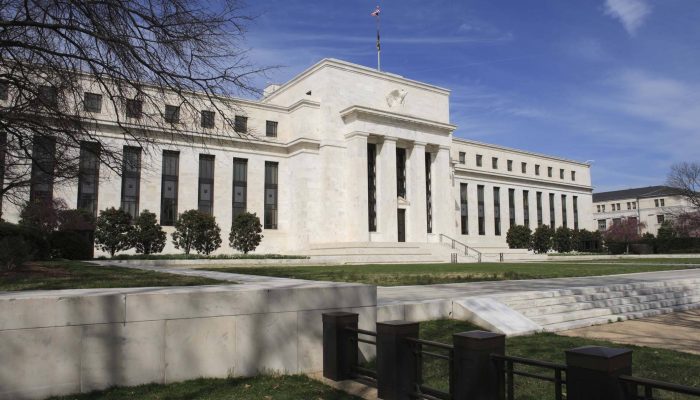Analyzing The Central Banks: Watch Free Video

Posted April 8, 2016
The Central Banks have become the most powerful players in the global economy in recent years. Consequently, since its launch in 2013, Macro Watch has published a series of videos that analyze central bank policy. Please find them listed below, each with a brief description. Macro Watch subscribers may find this list helpful in indentifying videos they have missed.
For those who follow my blog, but who have not (yet?) subscribed to Macro Watch, please find here a free, direct link to a video called “Analyzing The Five Largest Central Bank”:
https://vimeo.com/user20236372/review/110228691/6873b27b57
This video discusses the world’s five largest central banks (The PBOC, The Fed, The BOJ, The ECB & The BOE): 1. What they are doing; 2. What impact they are having; 3. What they are likely to do next, and; 4. How that could affect the financial markets. It was published in Q4 2014. No password is required. Just click and watch.
If you find this blog useful, please share it with your friends and colleagues.
MACRO WATCH
THE CENTRAL BANK SERIES
- Liquidity: Parts 1 & 2 (Q4 2013)
Liquidity drives asset prices. These videos explain how liquidity is created by central banks and the mechanics of how it impacts the financial markets.
- The Fed & Liquidity (Q1 2014)
What will tapering mean for liquidity and asset prices?
- The Fed’s Balance Sheet (Q3 2014)
In this video, we dissect the Fed’s balance sheet. On the asset side, we see which assets the Fed has acquired with the fiat money it has created; and we discuss the impact those asset purchases have had on the economy. On the liability side, we look at the build up of excess reserves held by the banks. Finally, we see where to find and how to download historic data from the Fed’s Balance Sheet.
- The Outlook for Global Liquidity Points to Deflation Ahead (Q4 2014)
Here I create an index of Global Liquidity and project it out to the end of 2016. The findings suggest the risk of Global Deflation is intensifying.
- Analyzing The Five Largest Central Banks (Q4 2014)
This video discusses the world’s five largest central banks: 1. What they are doing; 2. What impact they are having; 3. What they are likely to do next, and; 4. How that will impact asset prices.
- ECB QE (Q1 2015)
The ECB has announced a massive Quantitative Easing program of Euro 60 billion per month. This video explains what the ECB will do, why they will do it, how ECB QE is meant to work and the positive impact it is likely to have on European stock markets.
- QE Is Debt Cancellation (Q1 2015)
When a central bank prints money and buys a government bond, it is effectively the same thing as cancelling that bond. This means the governments have far less debt than is generally understood. It also has very important implications for policy.
- How The Fed Intends To Hike Interest Rates (Q1 2015)
This video explains how the Fed intends to increase interest rates when that time eventually comes. It also explains that what the Fed has in mind would be a very bad idea that could cost US taxpayers hundreds of billions of dollars.
- Negative Interest Rates (Q1 2015)
More than $2 trillion worth of bonds are now trading at negative interest rates. This video explains how this crisis of negative interest rates came about.
- The Five Reasons The Fed Couldn’t Hike Interest Rates (Q3 2015)
In this video we examine the five reasons the Fed couldn’t hike interest rates at its September FOMC meeting and consider why these same five reasons will prevent the Fed from increasing rates any time soon.
- Negative Interest Rates: How Did This Happen? (Q1 2016)
$7 trillion worth of bonds are trading with negative yields. This video discusses five reasons interest rates have turned negative. It also considers the goals, results and negative consequences of Negative Interest Rate Policy, NIRP.
- Are The Central Banks Out of Ammunition? (Q1 2016)
In this video, we find that the central banks still have plenty of ammunition, but that using it may cause such extensive collateral damage that the costs would outweigh the benefits. We also look for alternative policy tools.
- ECB Policy: Everything You Need To Know (Q2 2016)
This video describes the increasingly aggressive policy measures the ECB has employed since the crisis began in 2007. It also discusses their effectiveness.
Coming attractions: the Bank of Japan and the People’s Bank of China.
To subscribe to Macro Watch, click on the following link:
http://www.richardduncaneconomics.com/product/macro-watch/
For a 50% subscription discount worth US$250, hit the orange “Sign Up Now” tab (ignore the “$500 / year”) and, when prompted, use the coupon code: announcement
More than 23 hours of Macro Watch videos are available to watch immediately. A new video will be added approximately every two weeks.


No comments have been made yet.